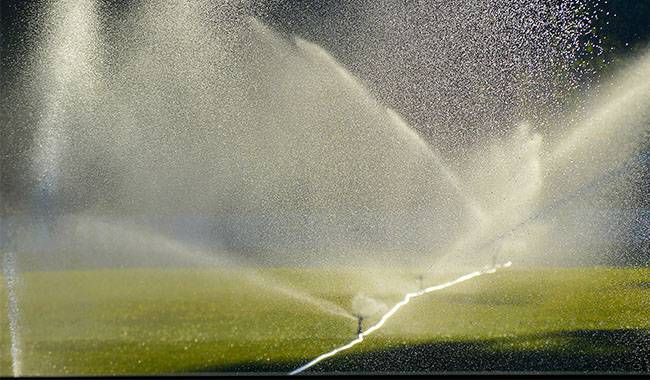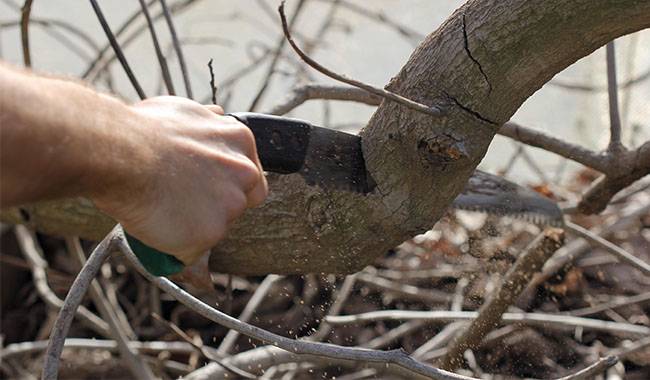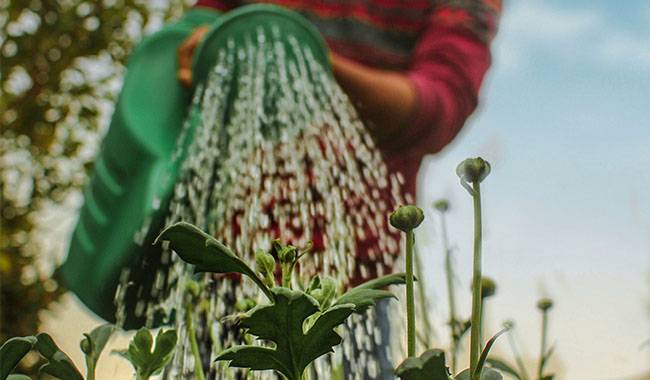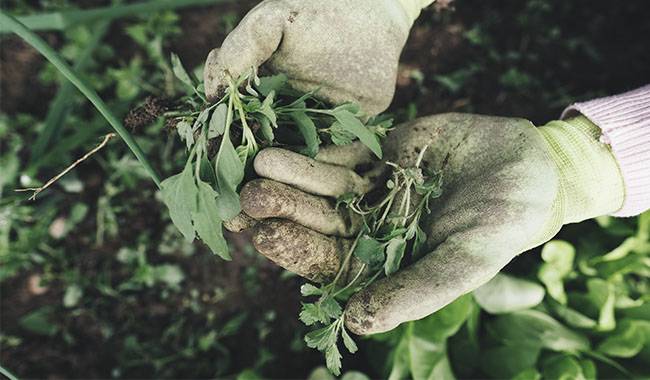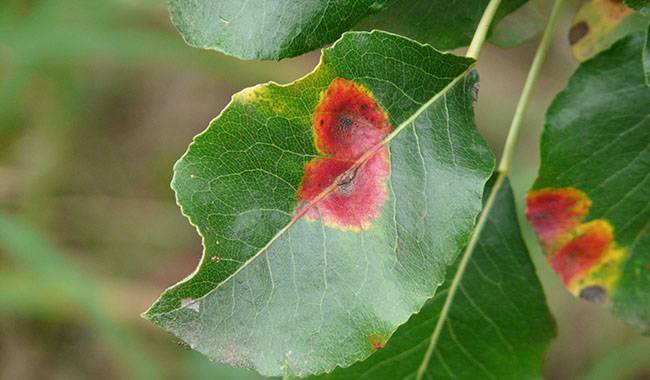
The house site is usually divided into several parts. Living areas with outbuildings, vegetable gardens with the most popular vegetable crops, flower beds, and recreational areas with mixed grasses, flower beds, decorative shrubs, including conifers. The orchard and berry garden is an indispensable part of the Dacha, with its beloved pears, apples, cherries, plums, cherries, and quinces of different maturity. The berry orchard is rich in raspberries, currants, gooseberries, and sea buckthorn, among many other varieties. The orchard is beautiful in the flowering period.
But by the time it comes into bloom, the leaves are covered with small yellow-brown spots that gradually grow into larger ones. Apples, pears, plums, currants, and currant trees have rusty yellow spots on the upper part of the leaves that are fire-eyed. Obviously, this is not physical damage or treatment of the plant with the wrong agent (e.g., herbicides instead of disease killers), but a real disease. Trees and shrubs are affected by “plant” or “biological” rust fungus diseases.
THE RUST FUNGUS PATHOGEN AND ITS DEVELOPMENTAL CYCLE
The pathogen is a rust fungus (Pucciniales) that is parasitic in higher plants of many families. The infestation begins in April by forming small brownish-black dots on the upper side of the leaf lamellae of affected plants. Each dot is a localized infestation caused by the ingestion of one or two fungal spores.
Rust fungus is considered one of the most harmful pathogens to agriculture, horticulture, and forestry. Rust fungus is a major problem and limiting factor for the successful cultivation of agricultural and forestry crops.
White pine blister rust, wheat stem rust, soybean rust, and coffee rust are well-known examples of devastating threats to economically important crops.
Rust fungus spores are carried by wind and pests (ants, aphids) and cause multiple infestations on the leaves of fruit plants. Mature spores are dispersed by wind and can cause a mass infestation of orchard crops of the same species over great distances.
Once in the host plant, the spores germinate, and the mycelium spreads throughout the tissues of the crop. Rusty yellow spots on the leaves of diseased trees and shrubs are the external manifestation of a fungal disease, often called rust fungus. In summer, filaments grow on the back of the leaves of diseased plants, in a thread-like form on apple trees, and in papillae on pear trees. These have formed spores ready to infect their hosts.
The rust fungus class of fungi is characterized by forming different types of spores during their developmental cycle. These spores can undergo their entire developmental cycle on the same plant or different plants.
Based on these characteristics, they are divided into two groups.
- Hermaphrodites.
- Hermaphrodites and monozygotic twins.
The hermaphroditic rust fungus over-infects the host and other conspecific plants: apple trees, other apple species, and varieties; pear trees, other pear varieties, etc.
A divergent group of rust fungus usually develops on two different plants but usually ends its developmental cycle on fruit crops.
- For apple trees infected by multiple rust fungus fungi, the main host of the fungus is the Common juniper.
- For pears – Juniper.
- For plum – Wild Anemone.
Pine, spruce, and other conifers are heavily affected by rust fungus.
In berry bushes, currants, gooseberries, and raspberries are heavily affected by rust fungus. Their intermediate hosts are Sedges, Eastern white pine. pinus sibirica is the intermediate host for black currant.
By spring, excrescences (pustules) appear on the intermediate hosts, containing mature spores (basidiospores). When they break, yellow dust or “rust powder” spills out. These are mature spores that can spread beyond 200-330 feet (60-100 m) and infect the leaves, shoots, and fruits of fruit crops.
Fruit crops are intermediate hosts for rust fungus. Diseased leaves of fruit berries and orchard crops will shrivel and curl. Early leaves begin to fall off. The condition of the plant deteriorates. The yield and quality of fruit decline sharply. Affected trees and shrubs will die if no protective measures are taken.
MEASURES TO PROTECT PLANTS FROM RUST FUNGUS
Protecting orchard crops from rust fungus requires a series of measures that are implemented consistently. Single treatment protection will be ineffective, especially for different species of fungal diseases.
Protective measures can be divided into several groups.
- Preventive.
- Agronomic.
- Chemicals.
- Biological.
Preventive measures against rust fungus fungi
- Systematic examination of horticultural crops to diagnose the disease.
- Keep the area clean of weeds, especially Sedges, windbreaks, and thistles, which are intermediate hosts of the disease.
- Clean up leaf litter in the garden. Disease leave is best burned off-site.
- Remove plants that are the main hosts of the pathogenic fungus from the area, or treat both (Juniper, conifers).
- Orchard plots should use only established, rust fungus-resistant varieties and hybrids of fruit and berry crops.
Agronomic practices for the control of rust fungus fungus
Follow the agronomic practices recommended for the crop, especially with regard to irrigation. Avoid stagnant irrigation water under trees and shrubs. The fungus multiplies particularly fast in wet conditions. Be sure to monitor incidence under prolonged (7-10 days) wet weather.
Paint the trunks and trellis branches of garden crops each spring and fall with a freshly quenched lime solution with added clay and glue (for better adhesion) and copper-containing preparations (copper sulfate, zinc, cuprates).
Prune after the leaves have completely fallen or in the spring before the buds open. Remove all branches and bark that show signs of disease (covered with small nodules or orange growths), taking a healthy area of 4-6inch (10-15 cm). Removed branches should be treated with copper or iron sulfate and covered with garden varnish.
In the fall or spring, dig above the roots and treat the soil surface with a 5-7% solution of urea or ammonium nitrate, alternating with a 4-5% solution of copper sulfate.
Be sure to treat the crown with an antifungal agent. Then, in spring, schedule an additional shower of micronutrients, which help strengthen immunity to diseases.
Eliminate junipers, other conifers, and unfruitful plants on-site, as well as grasses that cause rusting. Treat their location several times with boiling water or copper sulfate, Bordeaux mixture, or other rust prevention products.
Rules for treating plants with chemicals to prevent rust fungus
On private land, the use of chemicals to control crop diseases is not recommended. If preference is given to chemical agents, working solutions for spraying must be prepared strictly in accordance with recommendations. Give preference to insecticides with systemic action, systemic-contact action, and contact action.
Take all hygienic precautions (high shoes, closed clothing, headgear, goggles, respirator, gloves). After treatment, change clothes and shower.
Treat plants in dry, windless weather, after morning dew until 11:00 p.m. and after 4:00 p.m. to 5:00 p.m.
Pesticide residues should be poured into a special pit or area inaccessible to children, animals, and birds.
Complete insecticide treatments 30-35 days prior to harvest (unless recommended) and never treat plants during flowering.
To reduce the burden on plants, it is best to spray using a tank mixture that combines several products for pest control in one solution. Check the compatibility of the preparations beforehand before mixing.
Treatment options for rust prevention with chemicals
You can suggest (as an example) some rust fungus treatment options for rust fungus plants. They are simple to prepare but require strict adherence to the recommendations.
Experienced growers (no doubt) have other mixed tanks in their arsenal, but in any case, the use of chemicals requires attention and treatment at specific periods (stages) of plant development. Usually, all treatments are done before and after flowering so as not to kill beneficial insects (bees, bumblebees, predatory insects – beetles, ladybugs).
- Treat trees with 2%-3% Bordeaux mixture before the buds open. Repeat the treatment with 1% solution during germination and after flowering. Apply a final treatment at the beginning of fruit germination.
- At the same stage, treat with 1% copper sulfate (blue spray) for the first time and copper chloride, or other fungicides, for the second time. Copper oxychloride can also be used. The third spray is with a 1% Bordeaux mixture. Some gardeners recommend repeating the spray after 10-12 days with 1% Bordeaux mixture.
- The chemical fungicide Topaz is effective against rust fungus. Three treatments are sufficient to prevent rust fungus. Start the treatment at the budding stage, immediately after flowering and during fruit sprouting.
- Apply the first and second treatments with 1% Bordeaux mixture. For the third treatment, you should use colloidal sulfur or sulfovitol. For the fourth treatment, you can use Propi-Star herbicide or any other product that is active against several types of fungal diseases.
If you do not wish to remove the main source of infestation (juniper, other conifers), treat both species at the same time. The following treatment regimen can be recommended to kill the fungus at the primary source of rust fungus infestation. Note: Treat juniper, conifers, and weed plants while treating fruit and berry plantings with the recommended preparation.
If shrubs are healthy, treat 2-3 times during warm periods with the following preparations as a preventive measure, e.g., Bordeaux mixture.
Other preparations containing copper can be used, and plants can be sprayed up to 6 times during the growing season (not used as food), with mandatory treatments in late autumn and early spring. Spraying with these preparations alternates at intervals of 7-8 days.
To strengthen the resistance of prickly cypress and other conifers to rust fungus and other fungal diseases, it is recommended to treat plants with micronutrients and immunostimulants.
There is a special product called saprol that can be used to treat juniper. Spraying is started in early spring and continued throughout the warm period at 7-10 day intervals.
Systematically inspect and remove diseased shoots. If the shrub is severely damaged, cut it off completely, leaving 1-2 live buds at the base. Dig out the soil around the pruned shrubs. Apply a complete fertilizer of diammonium hydrogen phosphate, preferably a compound fertilizer. In late fall or spring, treat the soil with urea or ammonium nitrate (5-7% solution) and cover mulch. It is best to transplant the cut shrubs to another location at a greater distance from the fruit and berry planting site.
PROTECTION OF BERRY CROPS FROM RUST FUNGUS WITH BIOLOGICAL AGENTS
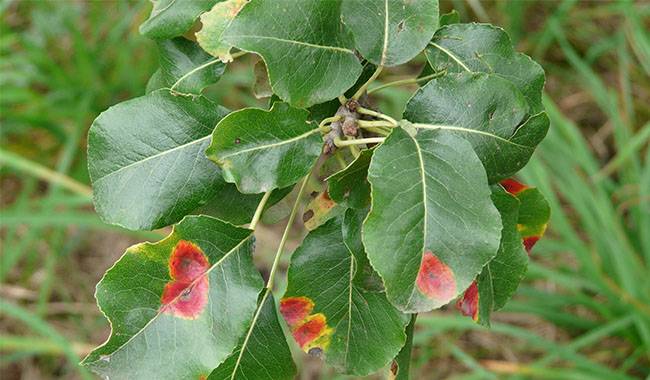
To achieve an environmentally friendly harvest in summer cottages, it is necessary to use biological agents for protection. They are based on efficient microorganisms and are harmless to humans, animals, and beneficial insects. Biological agents are not toxic and do not accumulate in fruits and other parts of the plant. The protective effect of biological agents lasts about 3 weeks. The plants can be treated until harvest.
They can be easily mixed with other biological agents into tank mixtures, thus reducing the number of treatments for different pests and diseases. However, their effective action occurs only within a certain positive temperature range from 53-64 °F (12-18 °C), and the ratios are strictly adhered to when preparing working solutions. If the requirements are not met, or if only 1-2-3 treatments are carried out, the effect will not appear.
The gardener’s kit must include a set of biological preparations to treat vegetable, horticultural, and berry crops. Trichodermin, Gamair (fungicide) is used to protect plants from rust. This last preparation stands out for its double action. It destroys not only fungal diseases but also some pests.
Only some biological preparations are listed in this article. After studying the effectiveness of other biological preparations, you can independently choose to mix tanks and grow healthy, environmentally friendly crops for your environment and your family members.
More related information about Plant Diseases




